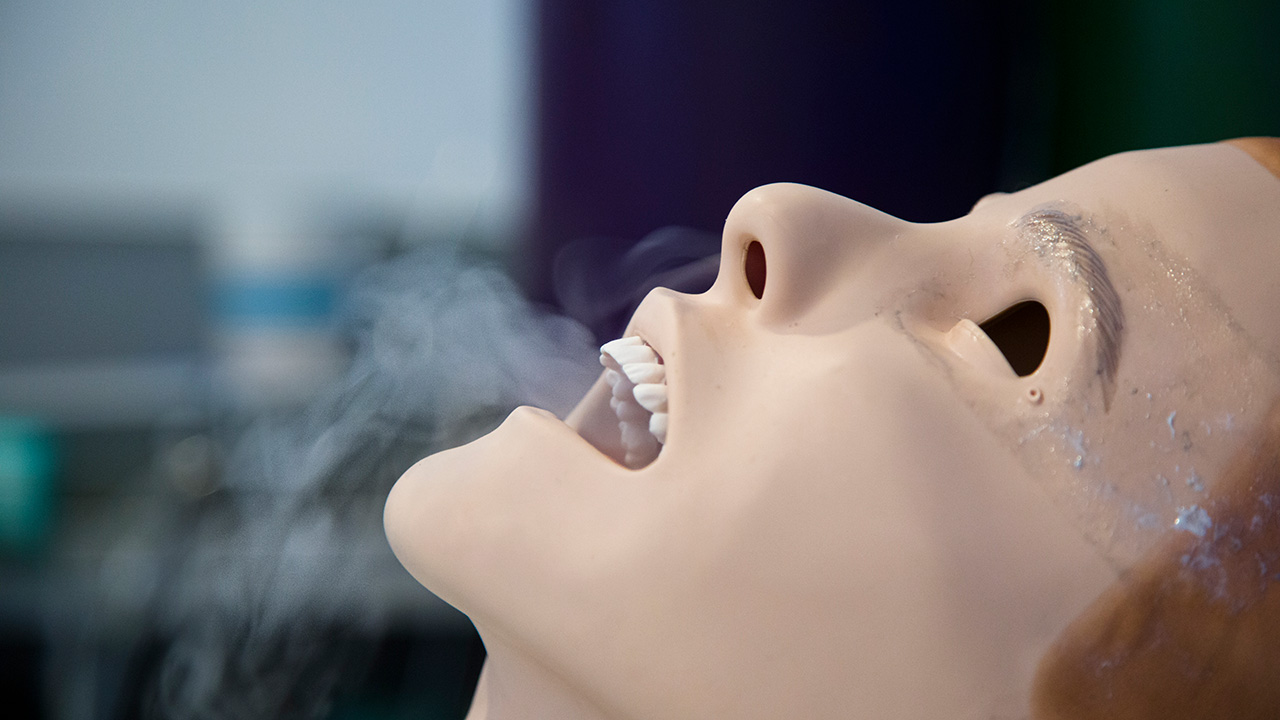Team uses simulation to study how SARS-CoV-2 spreads
A team at Sunnybrook is working to better understand how SARS-CoV-2, the virus that causes COVID-19, spreads in the environment.
In their simulation study, a mannequin hooked up to a ventilator in a negative pressure room mimics a patient in an ICU room.
A non-harmful “viral surrogate” is aerosolized through the mannequin's breathing system during simulated activities like receiving high-flow oxygen.
Researchers then collect and count the virus particles from the air to see how much virus spreads in the room and which means of oxygen delivery spreads the virus more.
“Simulation allows for the research to take place in a safe and controlled way,” said Hamed Avari, PhD, biomechanical engineer. “We control the environment — like the humidity and temperature — and can examine how the virus behaves in different situations.”
This work brings together a unique research team, made up of infectious diseases and critical care physicians, respiratory therapists, engineers, and virologists.
“What we’ve seen throughout this pandemic is scientists and specialists from various disciplines coming together in new ways to form research teams,” said Dr. Samira Mubareka, infectious diseases physician and virologist. “These collaborations have allowed us to better understand this new virus quickly, and I look forward to continuing to work with these high-performing teams to further our understanding of SARS-CoV-2.”
The simulation study results are expected to be published soon and will help hospitals make ongoing decisions on how to continue to care for COVID-19 patients in the safest way for their health care workers.
A team at Sunnybrook is working to better understand how SARS-CoV-2, the virus that causes COVID-19, spreads in the environment.
— Sunnybrook Health Sciences Centre (@Sunnybrook) May 22, 2020
➡️ Read more about this simulation study: https://t.co/nFICKiDw0p pic.twitter.com/lZpUhvOYGD









